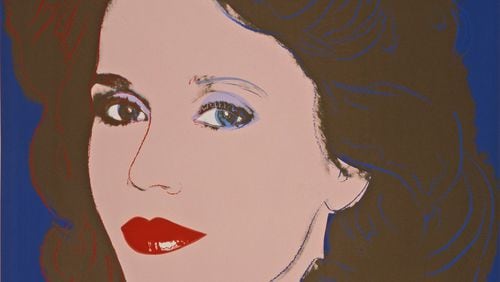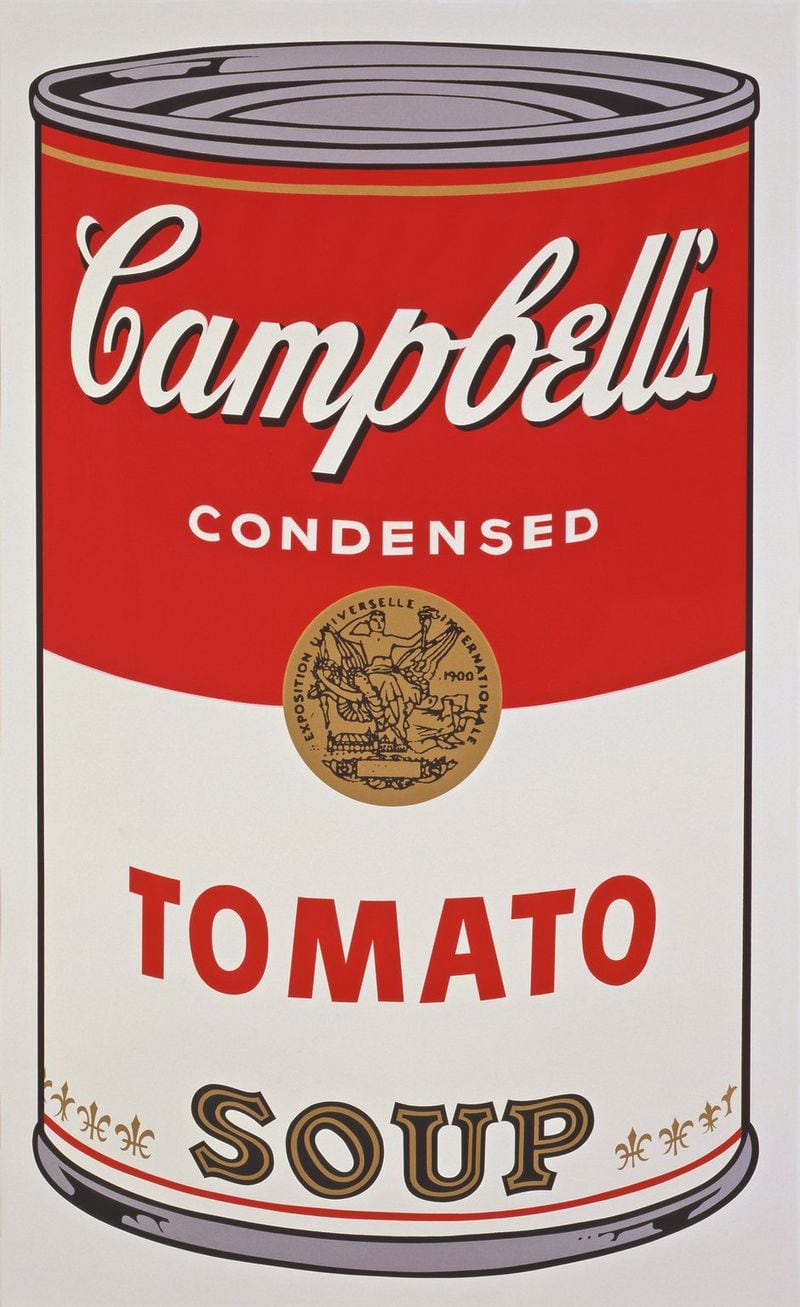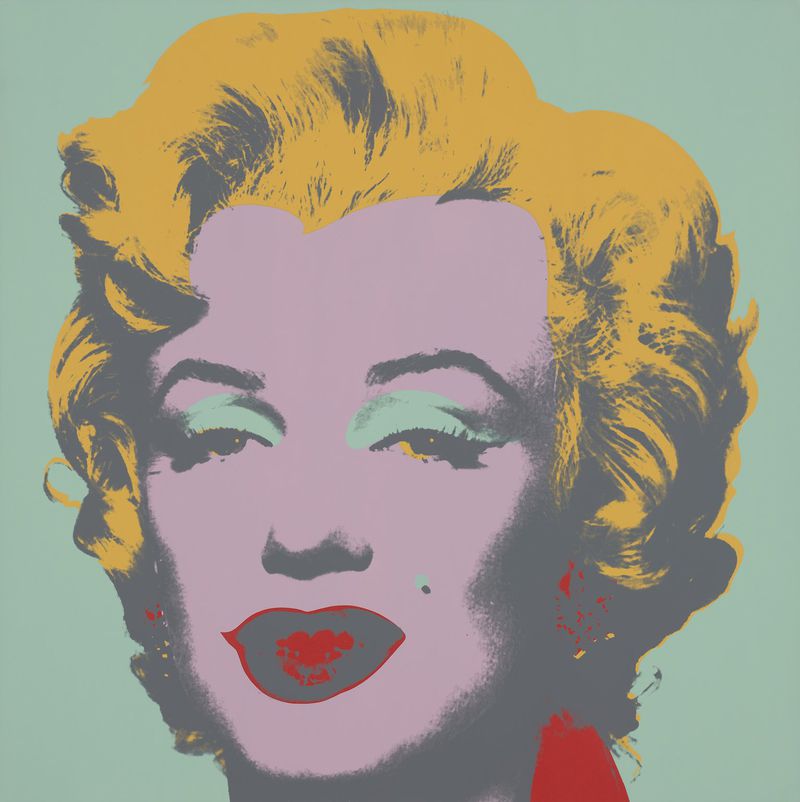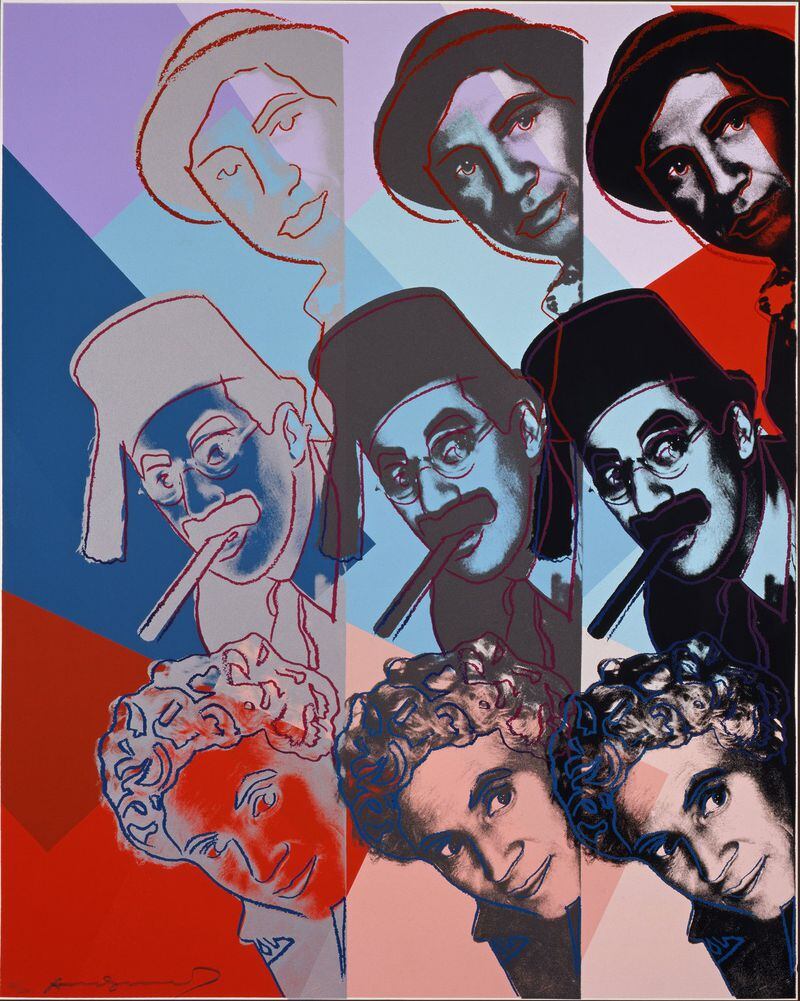As iconic as the consumer products he immortalized, Andy Warhol may be the best-known American contemporary artist: the human equivalent of a Coca-Cola.
Instantly recognizable as both a personality — peering out from beneath that silver wig — and for his distinctive Pop Art Campbell's soup cans, Warhol can still deliver some genuine surprises, affirms an exhibition of more than 250 prints at the High Museum, "Andy Warhol: Prints From the Collections of Jordan D. Schnitzer and His Family Foundation." The show is a foil to any feeling that we always knew Warhol and his work soup to nuts.
This far-ranging exhibition originated at the Portland Museum of Art and the enormous print archive of Portland collector Schnitzer. The show itself can be a mixed bag, a reminder that even this brilliant 20th-century artist could produce some middling work. Nevertheless, the exhibition is essential viewing for any student of contemporary art or 20th-century life.
Warhol was absurdly prolific until his death in 1987, and his legacy hangs over our own reality TV, true crime, tabloid present like the ghost of Christmas future. The love child of Walter Benjamin and Marshall McLuhan, Warhol remains one of the most savvy chroniclers of pop culture imagery both gruesome and glamorous, and his work is an immersive rubbed nose in our own addict-like dependence on an ever-escalating litany of visual shocks. The creation of Warhol’s prints mimicked the products and the processes he depicted: churned off a creative assembly line like those endlessly mass-produced Campbell’s soup cans and Brillo boxes.
For those most familiar with his iconic Pop works, Warhol’s early commercial work on lavish display in this exhibition is everything his more hard-edged and brilliantly incisive later Pop work is not. Silly, whimsical, and filled with the kind of charming, lyrical flourishes that suggest Maira Kalman crossed with Fragonard and topped with a dribble of Ben Shahn, Warhol’s designs for fashion magazines and for I. Miller shoes, his Technicolor cats and cherubs as overstuffed as a Victorian sofa, signal a different impulse than the work he is known for.
A practiced collaborator, both in his more well-known ’60s-era Factory days when a cast of socialites, misfits, musicians and drug addicts fueled his creative output, Warhol made other creatives his confreres early on too. In one of the funnier early collaborations on view, “Wild Raspberries,” Warhol reveals a streak of anarchical wit different from the Buddha-like, detached persona he later cultivated. Working with interior designer Suzie Frankfurt, the pair’s “Wild Raspberries” was a silly, mock cookbook accompanied by delightfully oddball illustrations.
From sweet to salty, another disruption of the expected Warhol lexicon appears in a series of genuinely shocking 1978 “Sex Parts”; black-and-white screenprints discreetly tucked away in a gallery alcove. These rarely exhibited X-rated screenprints of gay bath house denizens indicate the strange dichotomy that defined Warhol as both an unbridled creative and also a slightly parasitic voyeur in thrall to beauty, to celebrity and to human excess.
There are also forays into abstraction and some later portraiture using chunky blocks of color superimposed on his subjects — Mick Jagger, Paloma Picasso — that feel like riffs on his earlier portrait style rather than an enlargement of his ideas. Such work lacks the timelessness of Warhol’s most iconic and distinctive works, and are so steeped in the iconography of the ‘80s they can feel like kitsch. Warhol was a great artist, but his art was not always great. But as this exhibition illustrates, what he at times lacked in consistency Warhol made up for in proclivity, reinventing himself and his art over the course of a more than 30-year career to become one of the most important and enduring artists of our age.
ART REVIEW
“Andy Warhol: Prints From the Collections of Jordan D. Schnitzer and His Family Foundation”
Through Sept. 3. 10 a.m.-5 p.m. Tuesdays-Thursdays and Saturdays; 10 a.m.-9 p.m. Fridays; noon-5 p.m. Sundays. $14.50, ages 6 and above; free for children 5 and younger and members. High Museum of Art, 1280 Peachtree St. NE, Atlanta. 404-733-4444, www.high.org.
Bottom line: Some genuine surprises even for dedicated Andy Warhol fans in this print exhibition.









